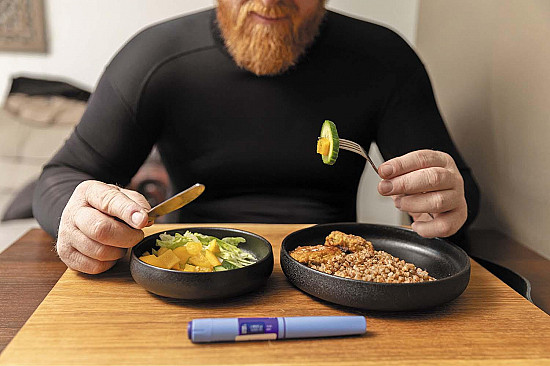Losing weight can help you lose the pain, too

If you experience knee or foot pain, extra weight may be adding more stress to your joints — and more pain. Fortunately, losing weight often helps to relieve some kinds of pain.
Finding an eating plan that is healthful and enjoyable will help you stick with your weight loss goals for the long term and maintain any weight loss you manage to achieve.
To help manage your weight, consider these approaches to cut back on calories:
- Keep track of how much you eat. It may seem simple, butkeeping a food diary can provide you with valuable feedback on your eating habits.
- Make small changes. Change your diet slowly to ensure you will be able to stick with it. Abruptly reducing the amount and type of foods you eat will likely backfire, causing you to go back to overeating.
- Use mindfulness techniques. Be mindful of when, where, and how much you're eating and when you begin to feel full. One tip is to take 20 minutes to finish a meal. That's the amount of time it takes your stomach to signal your brain that you are full. While eating, focus on your food rather than reading or watching TV. Put your fork down between bites and chew your food slowly and well. Observe the texture, taste, and aroma of the food you're eating. Bringing all of your senses into play can heighten your desire for fresh, healthy foods and help break the cycle of stress-related eating.
- Keep highly caloric food out of sight. Foods such as a candy bar, that contain a lot of calories but do not fill you up, will contribute to weight gain. Instead, put out apples or bananas, which are very filling and contain relatively few calories.
- Use smaller serving sizes and plates. Smaller portions equal fewer calories. Take advantage of 100-calorie snack packs or serve your food on smaller plates.
- Be self-compassionate. When you overeat, don't punish yourself. It won't motivate you to get back on track. Psychologists now believe that gentle self-compassion is far more effective for dealing with life's challenges, including weight loss.
As for physical activity, many forms of exercise are more difficult for people with hip or knee pain. Exercises that are easy on the joints include swimming and water aerobics. Talk with your doctor or physical therapist, who can recommend other ways to incorporate physical activity without making your joint pain worse.
There is no magic answer to how much weight you need to lose in order to make a difference regarding your joint pain. As few as 10 pounds or 10% of your overall weight might help, but this can vary from one individual to another.
For more on diagnosing and reducing your pain, read Pain Relief Without Drugs or Surgery , a Special Health Report from Harvard Medical School.
Image: Natnan Srisuwan/Getty Images
Disclaimer:
As a service to our readers, Harvard Health Publishing provides access to our library of archived content. Please note the date of last review or update on all articles.
No content on this site, regardless of date, should ever be used as a substitute for direct medical advice from your doctor or other qualified clinician.















